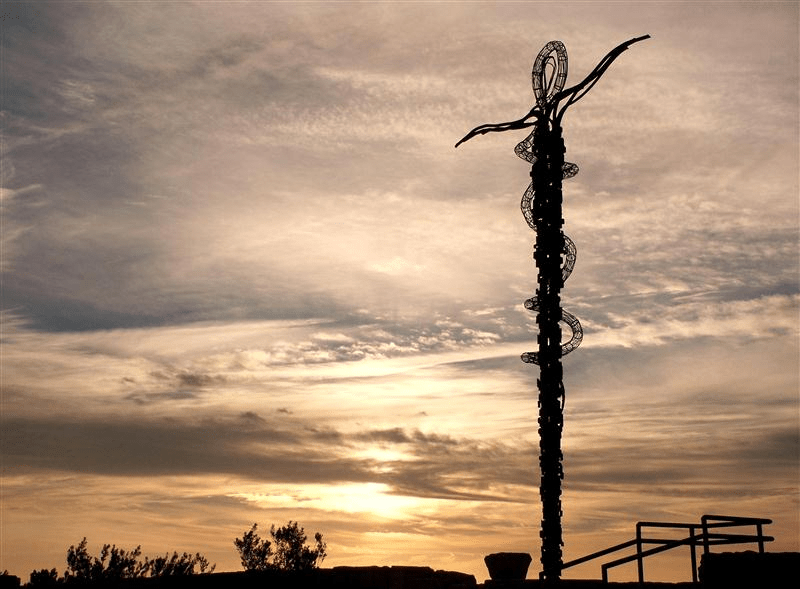Mount Nebo is most known for being the site where Moses overlooked the Holy Land but did not enter it and where a church and a monastery were built to honor him. The book of Numbers (33:47) mentions that when the children of Israel moved from Almon Diblathaim they camped in the mountains of Abarim, before Nebo, and that the children of Reuben rebuilt the city (Numbers 32:38).
The city remained with the Moabites, according to Isaiah: “Moab will wail over Nebo and over Medeba; on all their heads will be baldness, and every beard cut off” (Isaiah 15:2-3). The Prophet Jeremiah (48:1) said of Nebo, “Thus says the Lord of hosts, the God of Israel: Woe to Nebo! For it is plundered.”
The Prophet Moses “went up from the plains of Moab to the top of Pisgah, which is across from Jericho. And the Lord showed him all the land...” but told him, “you shall not go over there.” (Deuteronomy 34:1-4). “So Moses the servant of the LORD died there in the land of Moab, according to the word of the LORD, and he buried him in the valley in the land of Moab opposite Beth-peor; but no one knows the place of his burial to this day.” (Deuteronomy 34:5-6).
In the fourth century three domed buildings were erected in the place of the current altar. The place used to have a hidden passage which contained graves decorated with mosaics. On both sides of the place there were two small churches for performing the burial prayers. The baptistery, which is in the northern section of the site, is decorated with mosaics, while the floor of the southern section is decorated with a large cross.
